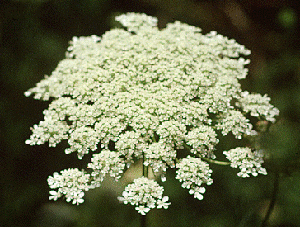Most people think that the Swinging 60s marked the first time women had easy access to birth control. But believe it or not, effective birth control is almost as old as civilization itself. Before the advent of the pill and vulcanized rubber, men and women had to experiment with some pretty wacky items to find reliable ways to prevent pregnancy.
Here are some of the strangest things our ancestors used to keep from getting knocked up...most of which actually work!
Crocodile Dung
Don’t ask us how the Ancient Egyptians figured this one out … We’re guessing it involved a lot of beer and a game of truth or dare. Crocodile or elephant dung would be collected, mashed into a paste with honey or oil or even sour milk, and inserted into the vagina before sex.
First mentioned in the Petri Papyrus of 1850 BC, this somewhat smelly application may have actually worked. Certain types of animal dung are high in acids, which meant they could potentially kill off sperm. Still, we don’t plan on trying it anytime soon.
Mercury
If you were unlucky enough to be born a woman in ancient China, you might be subjected to a dangerous type of birth control. Women would sometimes drink solutions containing mercury or lead in order to prevent conception. At best, it made you sterile. At worst, you died from heavy metal poisoning.
There’s a joke in there, somewhere.
In a related remedy, women in Ancient Greece looking to avoid pregnancy were told to drink the water the local blacksmith used to quench his metal in, presumably because it also contained lead and other metals.
Wild Yams
Native to both China and North America, the outer bark of the wild yam root contain high levels of a plant-based estrogen. Cultures in Mexico, including the Chiapas Indians, ate the plant for contraception.
In fact, the wild yam is so rich in this chemical that it was successfully used in the1960s by scientists looking to create birth control pills, and wild yam extract is still used in some brands of the pill today.
Silphium
There’s a reason you haven’t heard of silphium: the Romans were so crazy for this little plant that they ate it into extinction. The plant, likely some kind of fennel, only grew on a very narrow strip of land in Cyrene (modern-day Libya), and stubbornly resisted all attempts to farm it elsewhere in the Empire.
When taken orally, the plant could both prevent and terminate pregnancies. The silphium trade was so lucrative that the Romans considered the plant quite literally worth its weight in silver, and the plant’s image can even be found on ancient coins from Cyrene.
But when demand outstripped supply, the precious plant was over-harvested. Due to over-working of the land, by the 2nd century BC, silphium was no more. Fans of the sexy drama Spartacus on Starz may remember that Ilythia (played by Viva Bianca) obtained a vial of silphium to end her own pregnancy.
Queen Anne’s Lace
This pretty flower has a secret: European women used it for centuries as a kind of morning after treatment. The seeds from the flowers contain an estrogenic substance capable of arresting embryonic development. Other plants like rue and feverfew could be added to the mix, as both herbs were traditionally used to bring on menstruation. It’s a lot prettier than today’s morning after pills, but we’ll stick with the safer, modern version.
Mysterious Plant Sap
Picture this: you’re a Babylonian woman using the rhythm method to prevent pregnancy. When your period is late, how do you know if you’re pregnant? Believe it or not, as early as 700 BC, the Babylonians had a “pee-on-the-strip” pregnancy test you could use.
The exact recipe is lost to the ages, but we do know a bit about the preparation. Doctors would take the sap from a plant with white flowers, blend it with alum (a colorless metallic compound), and then apply it to strips of cloth. The sap created a sort of pH test, and when a woman urinated on the strip, the cloth would change color if she were with child. Seriously, how did an Iron Age civilization figure out this technology? The first at-home pregnancy tests didn’t become available in the US until the late 1970s!
Sheep Bladder Condoms
We’re not sure when the first bladder condoms were made, but we know for certain they were used in ancient Rome. Bladders, or sometimes intestines, were cleaned and tied off at one end. Sometimes, men would soften them in milk if they got dried out. Casanova also used (and re-used) a sheep bladder condom, decorated with pink ribbons.
Acacia Gum
Also known as gum arabic (the same substance found in candies and soft drinks today), acacia gum was used in Ancient Egypt as a spermicide. Sap was taken from the acacia tree and formed into a kind of cervical cap, then inserted.
Alternatively, some women would make tampons from fabric, soak them in fermented acacia juice and sap, and insert them into the vagina to prevent pregnancy.
Vinegar and Sponges
You wouldn’t think that religious texts would be a rich source of birth control secrets. And yet, the Talmud contains one of the oldest references to contraceptive sponges in the world. A small sponge soaked in vinegar, known as a mokh, was used to prevent pregnancy.
According to the Talmud, only three types of women should be permitted to use this form of contraception: girls too young to give birth safely, women who were already pregnant, and women who were still nursing a child. Kind of makes you think about that episode of Seinfeld where Elaine is looking for a “sponge-worthy” guy in a whole new light...
With such a long history of birth control in the ancient world, it’s amazing to think that our ancestors may not have been as inhibited as we once thought. Hard to believe we didn’t see that one coming...



